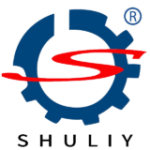Nous vendons de nombreux types de séchoirs, et les séchoirs rotatifs en font partie. Il existe sept modèles de séchoirs rotatifs que nous vendons actuellement. Chaque modèle a été bien accueilli par les utilisateurs. Ci-dessous, je présenterai le principe de fonctionnement de la machine.
Équipement de sèche-linge rotatif
L'équipement de séchoir rotatif est principalement composé d'une source d'alimentation thermique, d'une machine de chargement, d'un chargeur, d'un tambour rotatif, d'une machine de déchargement, d'un ventilateur d'extraction, d'un déchargeur et d'une armoire de distribution d'énergie ; après que le matériau humide déshydraté est introduit par une extrémité du séchoir, sous le retournement du tube intérieur uniformément réparti, le matériau est uniformément réparti et dispersé dans le séchoir, et est en contact complet avec l'air chaud co-courant (contrecourant), ce qui accélère la force motrice du transfert de chaleur et de masse de séchage. Pendant le processus de séchage, sous l'action de la plaque inclinée et du flux d'air chaud, le matériau peut être contrôlé pour se déplacer vers une autre valve de déchargement en forme d'étoile du séchoir pour décharger le produit fini.
Le séchoir rotatif a une grande capacité de traitement, un fonctionnement simple, un bon effet de séchage, et le matériau séché est en contact direct avec l'air chaud, et est séché par transfert de chaleur par convection. Selon la direction du flux entre l'air chaud et le matériau, il est divisé en flux parallèle et contrecourant. Dans le flux concurrent, l'air chaud se déplace dans la même direction que le matériau, et l'air chaud à l'entrée est en contact avec une teneur en humidité plus élevée. Comme le matériau est au stade de la vaporisation de surface, la température du produit maintient encore essentiellement la température du bulbe humide.
Bien que la température du matériau du côté de sortie du séchoir rotatif augmente, la température de l'air chaud à ce moment-là a diminué, donc l'augmentation de la température du produit n'est pas trop importante. Par conséquent, le choix d'une température d'entrée d'air chaud plus élevée n'affectera pas la qualité du produit. Ce séchage de matériaux sensibles à la chaleur inclut ceux qui contiennent des matériaux volatils, comme le séchage des sels d'ammonium dans l'industrie des engrais. Cependant, pour le séchage du sel d'ammonium, la température du matériau doit être inférieure à 90 °C pour éviter de brûler.
De plus, pour les matériaux à forte adhérence, il est également très avantageux d'utiliser un séchage simultané. En mode contre-courant, la direction du flux d'air chaud est opposée à la direction de déplacement du matériau. Pour les matériaux résistants à haute température, le séchage en contre-courant est utilisé, et le taux d'utilisation de la chaleur est élevé. La température de sortie de l'air du séchoir doit généralement être d'environ 10 à 20 °C au-dessus de la température de sortie du matériau en mode simultané. Dans le type contre-courant, la température de sortie de l'air n'est pas clairement définie, mais il est raisonnable d'utiliser 100 °C comme température de sortie.
Si vous souhaitez en savoir plus sur ce produit, vous pouvez cliquer sur l'entrée bleue ci-dessus, ou nous envoyer un e-mail et nous appeler.
